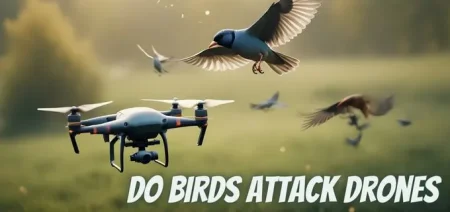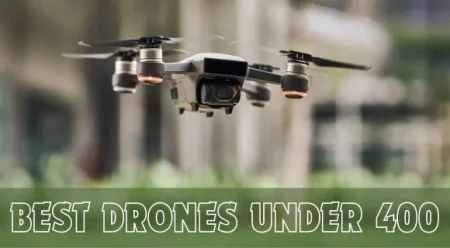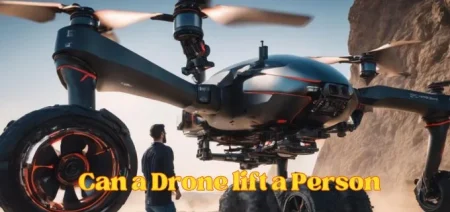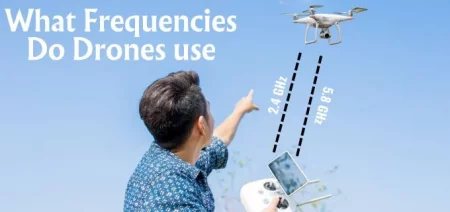
The popularity of drones is rising for personal and professional purposes, as they can capture impressive aerial footage and offer distinctive viewpoints of the world.
However, a drone is only as valuable as its battery life, and sometimes you may find yourself in a situation where you need to charge your drone but need access to a charger. It can be a frustrating and even stressful experience, but fear not – there are several ways to charge a drone without a charger.
How To Charge A Drone Without A Charger
In this blog post, we’ll explore four different methods for charging your drone when you don’t have a charger: using a USB cable, a power bank, a car charger. Each method has advantages and disadvantages, and we’ll discuss them in detail to help you choose the best option for your needs.
Knowing how to charge a drone without a charger can be valuable for any drone owner. Whether you’re traveling or filming in remote locations and forgot your charger at home, these methods can help you keep your drone in the air and capture the needed footage. So, let’s dive in and explore how to charge a drone without a charger.
1. How to charge a drone battery with a USB cable
The first method we’ll explore for charging your drone without a charger is a USB cable. It is a popular and convenient option, as most small drones come with a USB cable for connecting to a computer or other device. Here’s how to charge your drone using a USB cable:
- Locate the USB port. It is typically located on the side or bottom of the drone and may be covered by a small flap.
- Connect the USB cable to your drone. Insert the USB end of the cable into the USB port on your drone.
- Connect the USB cable to a power source. Insert the other end of the USB cable into a USB port on your computer, a USB wall adapter, or any other device that can provide power via a USB port.
- Wait for the drone to charge. The time it takes for your drone to charge using a USB cable will depend on the battery capacity and the power output of the USB source. Typically, charging your drone using a USB cable will take longer than a dedicated charger.

Disadvantages:
While charging your drone using a USB cable is a simple and convenient option, there are a few disadvantages to remember. For one, charging using a USB cable may take longer than with a dedicated charger.
Some USB sources may also need more power to charge your big fishing drone effectively. Finally, more time and resources may be used more efficiently than charging your drone using a USB cable.
To get the most out of charging your drone using a USB cable, ensure you’re using a reliable and high-quality USB cable and a power source that can provide sufficient power to charge your drone. Additionally, consider charging your drone using a USB cable overnight to ensure enough time to charge fully.
2. Charge with Power Bank
Another popular and convenient method for charging a drone without a charger is using a power bank. Here’s how to charge your drone using a power bank:
- Determine the power output of your power bank. Look for your power bank’s power output specifications and ensure it can provide enough power to charge your drone.
- Connect the power bank to your drone. Use a USB cable to connect the power bank to your drone, just as you would with a computer or other USB source.
- Turn on the power bank. Once your power bank is connected to your drone, please turn it on to start the charging process.
- Wait for the drone to charge. The time it takes for your drone to charge using a power bank will depend on the battery capacity of your drone and the power output of your power bank. Charging your drone using a power bank may take longer than charging it with a dedicated charger.

One of the advantages of using a power bank to charge your drone is its portability. You can take a power bank with you and use it to charge your drone in remote locations where access to a wall outlet may be limited.
Recommendations:
However, it’s important to note that only some power banks are created equal, and some may need more power to charge your drone effectively. Choose a high-quality power bank with sufficient power output to ensure the best results.
In addition, using a power bank to charge your drone may not be the most efficient use of your time and resources, as it may take longer to charge your drone than a dedicated charger. Therefore, it’s a good idea to plan ahead and ensure your power bank is fully charged before charging your drone.
3. Car Charger
A car charger can be a convenient option if you’re on the go and need to charge your drone while on the road. To charge your drone using a car charger, follow these steps:
- Find the car charger port in your car, usually in the center console or dashboard.
- Connect your drone to the car charger using a USB cable.
- Turn on the car charger and start driving to initiate charging.
- Charging time depends on the drone’s battery capacity and the car charger’s power output. Using a car charger may take longer than using a dedicated charger.
Using a car charger to charge your drone while driving can be a convenient option, but not all car chargers are suitable. Select a high-quality car charger with sufficient power output to ensure effective charging.
Safety should also be a priority. Avoid charging your drone during busy or hazardous driving conditions, and make sure the car charger is securely connected to prevent accidents or damage.
4. Removable Battery or Using Extra Batteries
Some drones come equipped with removable batteries that can be charged separately without needing a charger. Additionally, you can purchase extra batteries for your drone and swap them out to keep it powered. Here’s how to charge your drone using a removable battery or extra batteries:
- Remove the battery from your drone. Depending on your drone model, you may need to unscrew the battery compartment or press a release button to remove the battery.
- Charge the battery using a compatible charger. Most drone batteries come with a dedicated charger, so be sure to use a charger that is compatible with your battery.
- Replace the fully charged battery in your drone. Once your battery is fully charged, insert it back into your drone and power it on to resume flying.
Using a removable battery or extra batteries to charge your drone can be convenient if you have multiple batteries and want to charge immediately. This method also allows you to keep flying your drone while charging other batteries.
However, it’s important to note that not all drone batteries are interchangeable, and some may require specific chargers or have different charging times. Be sure to consult your drone’s user manual and only use compatible batteries and chargers to avoid any damage to your drone or battery.
Safety Measures for Charging a Drone:
Here are some safety measures to keep in mind when charging a drone without a charger:
Use a compatible power source:
When charging your drone battery with an alternative method, ensure that the power source you’re using is compatible with the battery’s voltage and current requirements. An incompatible power source can damage the battery or lead to a fire hazard.

Avoid overcharging:
Overcharging the battery can cause it to overheat, leading to a fire hazard. Always monitor the battery closely and follow the manufacturer’s charging time and voltage instructions.
Use a fireproof container:
To minimize the fire risk, it’s a good idea to charge the battery in a fireproof container or on a non-flammable surface.
Don’t leave the battery unattended:
While the battery is charging, avoid leaving it unattended. To prevent damage or overheating, check the battery frequently during charging.
Store the battery properly:
Once charged, store it in a cool, dry place away from heat and direct sunlight. It will increase its lifespan.
By following these safety measures, you can help to minimize the risk of damage or injury when charging your drone without a charger. It’s always best to prioritize safety and follow the manufacturer’s instructions when charging any battery.
FAQs:
How do you charge a dead drone battery?
If your drone battery is completely dead and won’t turn on, you can follow these steps to charge it:
- To remove the battery from your drone, follow the manufacturer’s instructions. To remove the battery, follow the drone’s instructions.
- Use a voltmeter to check the battery’s voltage to determine if it needs replacement. The battery may not hold a charge effectively if the voltage is below a certain threshold.
- Use a charger that matches your battery when charging. Check the voltage and charging current specified by the manufacturer to ensure you use the correct settings.
- Charging a completely dead battery may take longer than usual, and it’s important to avoid overcharging it.
- Use a voltmeter or the drone’s battery indicator to check the battery’s charge level. Reinsert the battery into your drone after it’s fully charged.
Can you wirelessly charge a drone?
While there has been some research into wireless charging technology for drones, there currently needs to be a common method for charging drones. Wireless charging technology typically requires proximity between the charging pad and the device being charged, which may not be practical for drones that often fly in open spaces.
Additionally, drones require a considerable amount of power to fly, and wireless charging technology may need to provide the necessary charging speed and efficiency to keep up with the drone’s power demands.
Some drones have built-in wireless charging capabilities, such as the DJI Mavic Air 2. These drones typically come with a wireless charging pad that can charge the drone’s battery by placing it on the pad.
Overall, while wireless charging technology for drones is still in its early stages, we may see more drones with wireless charging capabilities as the technology continues to develop.
how to charge FPV drone battery
To charge an FPV (first-person view) drone battery, you will typically need a charger compatible with your drone’s specific type of battery. Here are the general steps to follow:
- Ensure that the charger is compatible with your drone’s battery. Check the battery type, voltage, and current requirements specified by the manufacturer.
- To charge the battery, connect the charger to a power source and use the proper charging cable to connect it to the battery.
- Follow the manufacturer’s instructions to set the charging parameters. It may involve setting the charging current, voltage, and charging time.
- Start the charging process and monitor the battery closely. Avoid leaving the battery unattended while charging, and never overcharge it.
- Once the battery is fully charged, disconnect it from the charger and unplug the charger from the power source.
- Store the battery in a cool, dry place until you’re ready to use it again.
Following the manufacturer’s instructions and prioritizing safety when charging your FPV drone battery is essential. Avoid using incompatible chargers or methods that can damage the battery or lead to a fire hazard.
Conclusion
There are several methods for charging your drone without a charger, each with benefits and limitations. A USB cable, power bank, car charger, removable battery, or extra batteries can be a convenient way to keep your drone powered up and ready for flight.
It’s essential to follow the manufacturer’s instructions and prioritize safety when charging your drone, as using incompatible chargers or methods can damage your drone or battery. Additionally, be mindful of the charging time and temperature to ensure optimal charging and avoid overcharging or overheating your battery.
By understanding the various methods for charging your drone without a charger and taking proper precautions, you can enjoy the thrill of flying your drone without worrying about running out of power.










